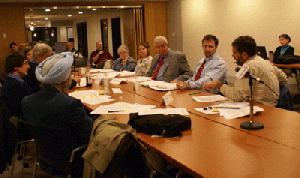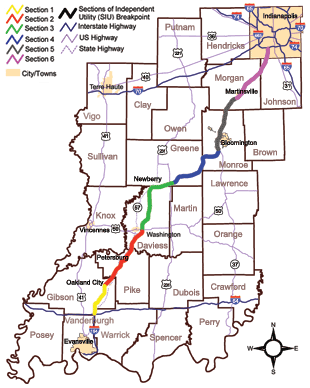In Indiana, the state DOT wants to build a 142-mile extension of Interstate 69, but the Bloomington metropolitan planning organization won’t allow it – the group had written the road out of its three-year transportation plan and members are standing firm, refusing to write it back in. The MPO in Charlottesville, Virginia, similarly, long fought the construction of a $245 million, six-mile bypass the state plans to build to accommodate freight traffic.
These local MPOs often (though not always) see the importance of things like urban transit and active transportation where states too often focus on big road-building projects. MPOs can provide a buffer between communities and state transportation bureaucracies, re-orienting priorities back to the local level.
There are 384 MPOs in the country. Two-thirds of them represent communities of less than 200,000 people. And there’s an existential threat to all of those MPOs in the new Senate transportation bill.
The bill states that the “continuing designation” of an MPO representing an urbanized area of under 200,000 people “shall be terminated” unless it meets “the minimum requirements established by the regulation,” to be determined by the Secretary of Transportation. Those “minimum requirements” have not yet been spelled out, and the Association of Metropolitan Planning Organizations (AMPO) is nervous about such vague wording.
AMPO Director Delania Hardy said that right now, no one knows what it means, exactly, to demonstrate “technical capacity,” as required in the Senate draft. “It’s a very fuzzy term that doesn’t have a lot of explanation in their text,” she said. She went on:
If we wound up with somebody who’s a pretty hardcore “let’s cut-cut-cut,” they could put together a stack of things that are almost impossible for the sake of killing off these MPOs. It could go that way.
And then, you could also wind up with someone who understands the value of involving your public participation, involving your local elected officials, keeping these things that have been around, in some cases, since the early 1960s, and they could say, “if you guys are able to do [the two main responsibilities of an MPO: the Transportation Improvement Program] and the long-range plan, and you’re able to satisfy your federal requirements and go beyond and take it to the next level, living up to the spirit of the law, maybe then everything’s OK.”
But there are some huge question marks in the way this bill is drafted right now.
The risk of dissolution of smaller MPOs would affect some people disproportionately. For example, eight states don’t have any urbanized areas of more than 200,000 people, so all of their MPOs are at risk. Besides, some small-population communities have large-scale transportation and planning issues affecting them – like those that lie along major trucking and freight corridors, for instance.

This idea of creating a mechanism to eliminate MPOs was floated in the leaked Obama administration draft of a transportation bill in the spring. The provision has been toned down some from that version, which reportedly was written by staff members at FHWA and FTA and hadn’t necessarily been approved by the higher-ups.
Senate aides say the idea is simply that, in a more performance-oriented bill, there should be accountability measures for everyone, “so just being an MPO by itself, with no criteria at all as to how that fits or what role they play” isn’t enough. They also say that with four years to satisfy those requirements, it “gives MPOs the opportunity to remain a very important player in the process.”
“It’s not an ‘on-off switch’ for smaller MPOs,” said one staff member.
AMPO itself has seen the writing on the wall for years and now supports limiting the creation of new MPOs to communities of under 100,000 people. Hardy says the National Association of Development Organizations, AMPO’s rural counterpart, also represents those communities. But still, Hardy would grandfather in any existing MPOs, and she worries that the Senate isn’t planning to take that precaution [PDF].
Some environmental and smart growth advocates are concerned that eliminating MPOs would weaken the impact of the strongest state-level smart growth law in the country, California's SB 375. The law tasked California’s 18 MPOs with creating “Sustainable Community Strategies,” including integrated land use and transportation planning, to reduce emissions. If some of those MPOs disappeared, the impact of SB 375 on those small metros would be thrown into question.






